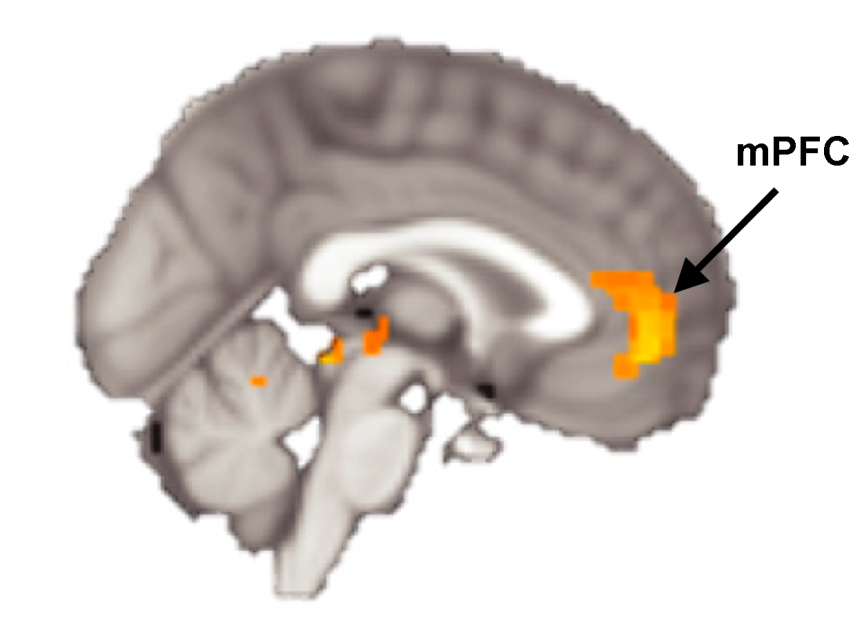
One obvious consequence of being a social mammal is that each individual wants to be accepted. Nobody likes rejection, be it from a family member, a friend or colleague, a job application, or even a stranger. So we try to mould our beliefs and behaviors to fit the social norms, a process called social conformity. But how does that happen?
Garvert et al. (2015) shed some light on the mechanism(s) underlying the malleability of personal preferences in response to information about other people preferences. Twenty-seven people had 48 chances to make a choice on whether gain a small amount of money now or more money later, with “later” meaning from 1 day to 3 months later. Then the subjects were taught another partner choices, no strings attached, just so they know. Then they were made to chose again. Then they got into the fMRI and there things got complicated, as the subjects had to choose as they themselves would choose, as their partner would choose, or as an unknown person would choose. I skipped a few steps, the procedure is complicated and the paper is full of cumbersome verbiage (e.g. “We designed a contrast that measured the change in repetition suppression between self and novel other from block 1 to block 3, controlled for by the change in repetition suppression between self and familiar other over the same blocks” p. 422).
Anyway, long story short, the behavioral results showed that the subjects tended to alter their preferences to match their partner’s (although not told to do so, it had no impact on their own money gain, there were not time constraints, and sometimes were told that the “partner” was a computer).
These behavioral changes were matched by the changes in the activation pattern of the medial prefrontal cortex (mPFC), in the sense that learning of the preferences of another, which you can imagine as a specific neural pattern in your brain, changes the way your own preferences are encoded in the same neural pattern.
Reference: Garvert MM, Moutoussis M, Kurth-Nelson Z, Behrens TE, & Dolan RJ (21 January 2015). Learning-induced plasticity in medial prefrontal cortex predicts preference malleability. Neuron, 85(2):418-28. doi: 10.1016/j.neuron.2014.12.033. Article + FREE PDF
By Neuronicus, 11 October 2015

